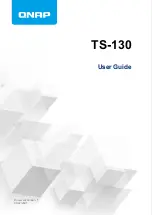
403
14.7.1-M
Cache parameters
Some notes on the caching process of the SX-GATE proxy.
Among others, objects will not be cached if
•
the connection is encrypted (HTTPS)
•
the web server requests authentication
•
caching is forbidden by the web server
•
the object's size exceeds a certain configurable threshold
•
the proxy has been configured not to cache objects from the corresponding
source
An already cached object will be refreshed if e.g.
•
the browser reloads the page
•
the object expired according to the expiration date determined by the web
server
If no expiration date was specified for an object, at some point in time the proxy of
SX-GATE will start to ask the web server if the object was modified since it has been
cached. If yes, it will be refreshed. When SX-GATE begins to send this type of requests
depends linearly on the last time the file was modified on the web server. However as
an upper limit, SX-GATE will check for modifications after 7 days on FTP servers and
3 days on HTTP servers.
If the cache runs out of disk space, expired objects and the least recently used objects
will be deleted.
If the browser presents outdated pages, please use the "reload" feature of your
browser.
To completely reload the contents displayed by the browser you
usually have to press a combination of keys (Internet Explorer:
Ctrl-F5). If you still see outdated contents, please clear the cache
of the browser.
RAM cache
This setting specified how much main memory (RAM) the proxy may use for caching
objects. Delivery of objects stored in the RAM cache is extremely fast.
















































